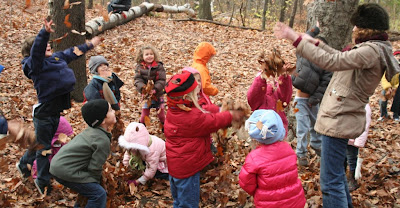Eco-Smart Thanksgiving: It's not gobbledygook!
The Thanksgiving Skinny!
This is not going to be a history lesson. In short, Thanksgiving emerged out of a celebration of fall harvest. It nicely lends itself to a more eco-friendly meal because the common foods associated with it, also happen to be appropriately seasonal. Meaning many of them can be bought locally, especially in North Carolina. Here are some tips for a more eco-friendly Thanksgiving:
1. Try and buy as many of your ingredients at a local farmer's market. Common this time of year are, sweet potatoes, pumpkin pie pumpkins, garlic, green beans, collards, chicken or turkey, homemade jams and relishes, etc.
2. Don't use disposable dinnerware. I know it's tempting, but instead think about delegating the clean up work. Make a game out of it with your kids. You could have a chain of duites, with one person clearing, another washing, one drying, and a fourth putting them up.
3. Don't overeat, and don't throw away your leftovers! It's a common trait among mothers in my family to try and push leftovers. "Someone's got to finish this last bite of mashed potatoes so it doesn't go to waste!" Eating more food than your body needs is just as wasteful as throwing it away, and it's unhealthy! Save your leftovers and compost the scraps.
4. Use your leftover turkey or chicken bones to make a delicious soup stock for a winter's day or nourishment if one of your children gets a cold.
5. Spend the extra time with your kids taking a nature walk or going to visit a local nature center. Collect interesting things along the way and then have a show and tell when you return home. What did your children find? Why was it interesting to them? What did they notice about it? What is its place in the ecosystem? Is it habitat, food, nutrients for soil, etc.?
6. And finally...
Thanksgiving is about giving thanks, right?
Thank you microbes!
It is easy to get wrapped up in our lives going from home to car to work to grocery store and back to home again, and forget that we are all so intimately tied to the earth. In my family, before we dive in to our feast on Thanksgiving day, we go around the table and each name one thing that we are thankful for. This year I might say "microbes!" Without beneficial microbes in soil, and this includes fungi, protazoa, and yes, the ever feared bacteria, we literally would not be enjoying a Thanksgiving meal, or any meal for that matter. In one teaspoon of healthy soil, there are more microbes than there are people on earth! Simply put, without microorganisms in soil, plants would not have sufficient nutrients to grow. Microbes take decaying organic matter and recycle it into nutrients that can be used by new plants. Specialized microbes fix nitrogen gas from the atmosphere, a form that is useless to plants, and convert it into a form that can be absorbed by root tissues of plants. And this all feeds into the web of life. Most of us will have a form of meat on our table, one that says "gobble, gobble" perhaps. Being omnivores, not only do fowl rely on plants for their nutrients, but they also eat critters that reside in the soil. Have you ever seen a chicken on the hunt and peck? Chickens and wild turkeys will eat insects such as fire ants, ticks, grasshoppers, fleas, and more, making them great for pest control. Another reason to be thankful! So consider taking some time this Thanksgiving to discuss the web of life with your family and appreciate all the creatures that have made it possible for your meal.





































